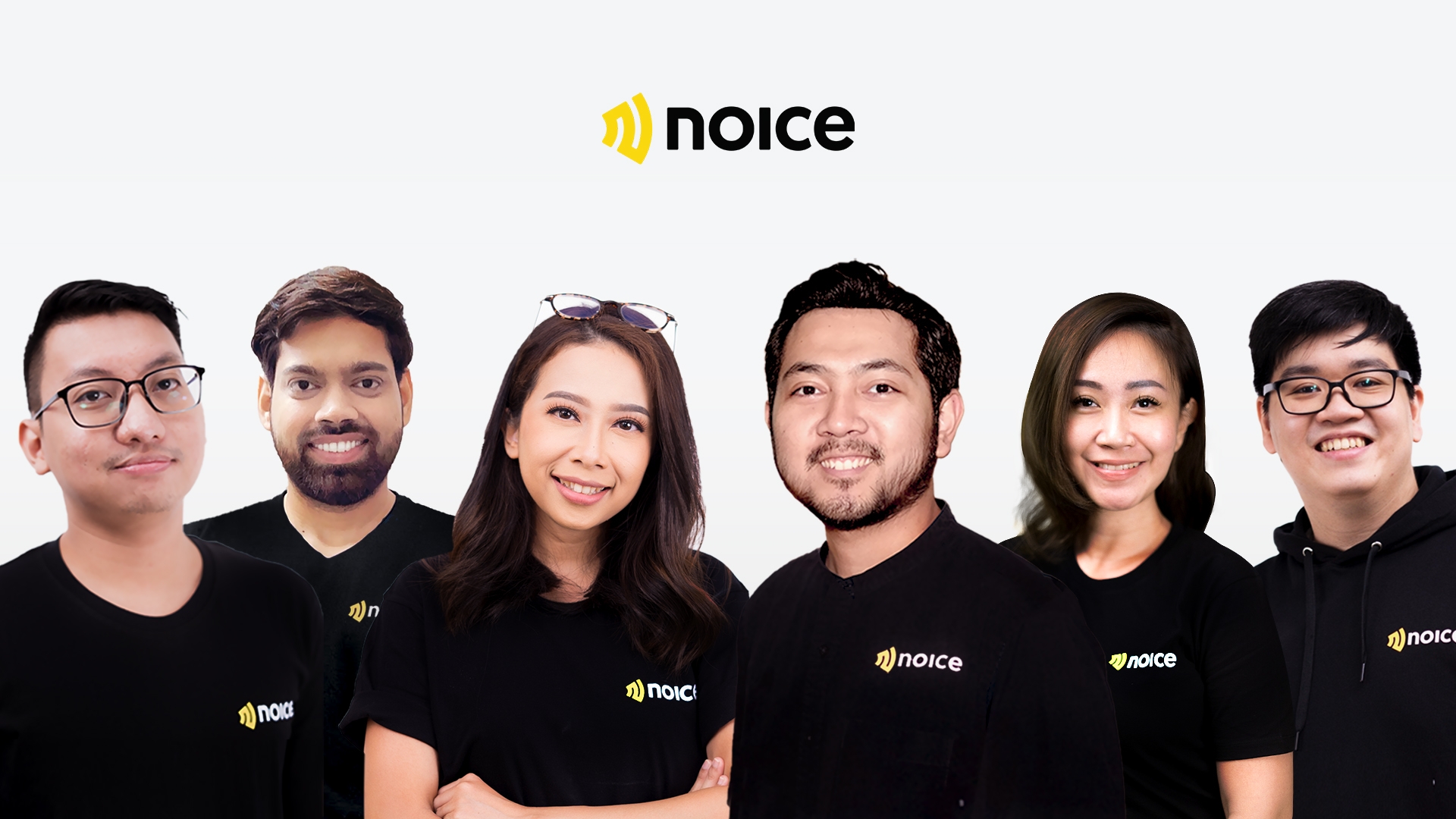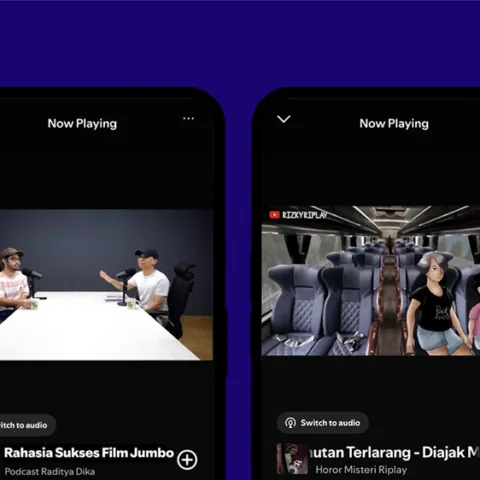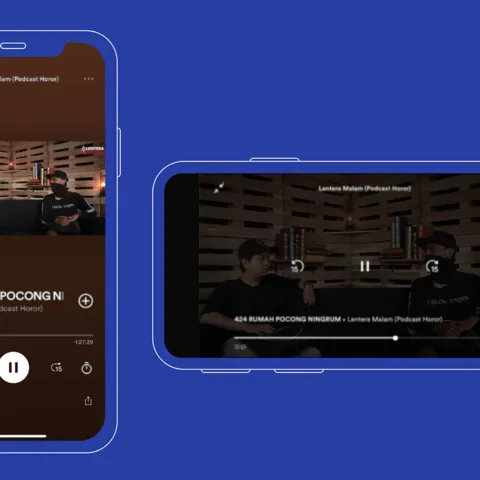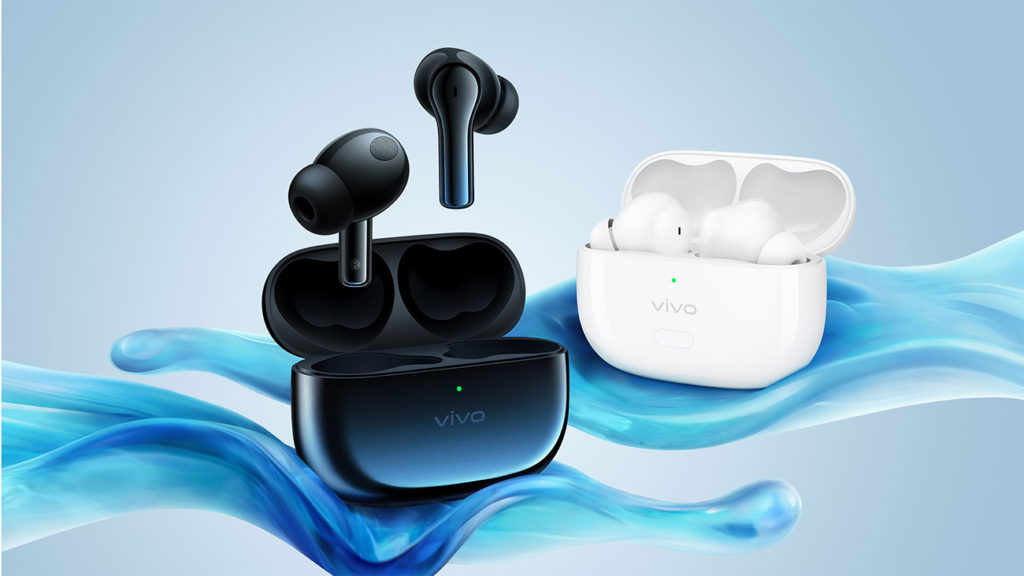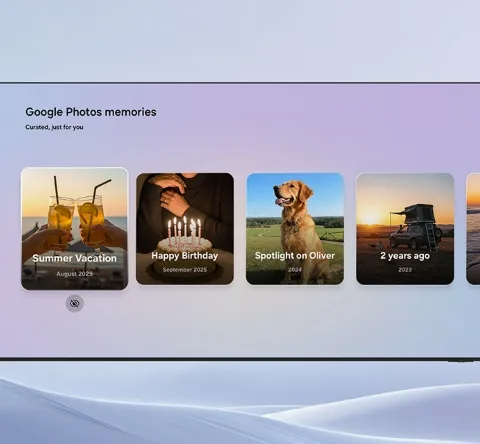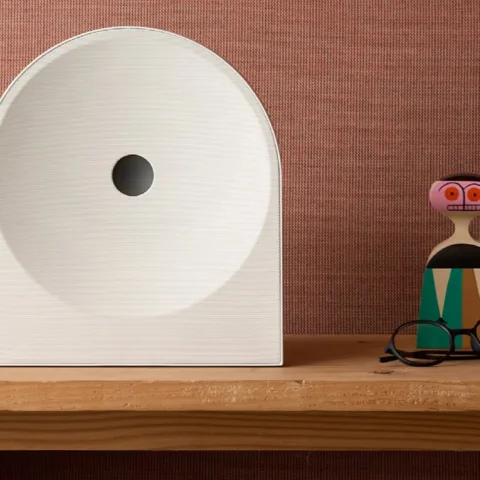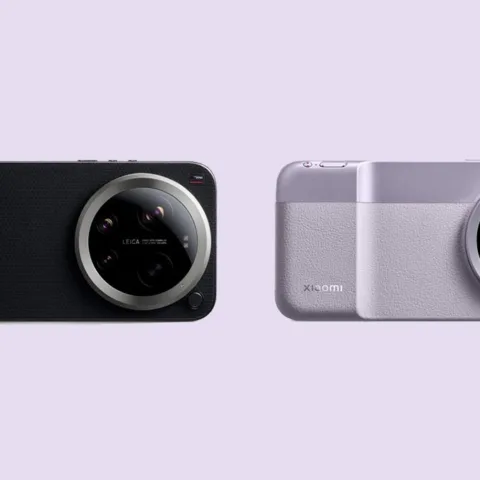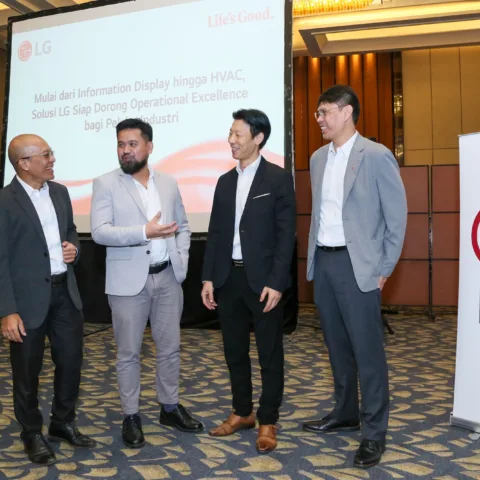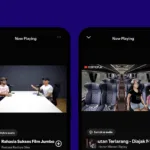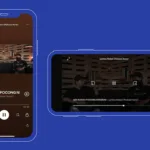To date, the entertainment app competition in Indonesia, either social media or streaming video/audio, is dominated by global players. The opportunity is there for local platforms, however, it requires differentiation and comply with the Indonesian people preferences to acquire new users.
This formula was successfully implemented by Vidio and Mola TV, which survived due to the strategy of broadcasting sports content exclusively, amidst the massive penetration of global video streaming platforms. According to research by Nielsen Sport in 2017, Indonesia (77%) ranks 2nd globally after Nigeria (83%) as a country with high interest in football.
That “exclusivity” formula doesn’t apply to audio streaming apps. There is no local platform dominates in this entertainment vertical. The opportunity has finally emerged since podcasts have mushroomed in Indonesia. DailySocial once reviewed how big the chances of local players to win in their own country through this voice-based content. Noice is one of which that is trying to pursue this position.
In an interview with DailySocial, Noice’ CEO Rado Ardian said, the podcast and non-music audio industry continues to grow, but the platform for providing quality non-music audio content is still very limited. As a result, Indonesia is still in a significant asymmetry position for support to digital-based entertainment content.
In Noice’s research, at least within 24 hours, Indonesians consume visual or on-screen content within 12 hours, then four hours off-screen which is an opportunity for audio platforms, and the remaining eight hours to rest.
Off-screen moments, or Noice calls them screenless moments, are moments where users listen to audio content, making it easy for those who are multitasking and productive in doing activities without looking at the screen, such as studying, driving, driving, or sports, but still want to enjoy entertainment content. quality.
This is validated by Noice’s annual achievements. Noice users increased by 144% in the last year or reached almost 1 million users. The average daily active listener spends more than 60 minutes on the Noice platform each day. In general note, users listen to the content at night before going to bed.
These users come from the age range of 18-34 years with various occupational backgrounds, including students, fresh graduates, employees, workers, and housewives. It is recorded that there are more than 100 original content has been produced by Noice’s creators, the number of which continues to grow. Comedy, horror, and hobbies are the favotite genres most people listen to.
“When the shows [we make] are getting more listeners, this is a validation of Indonesian people needs of screenless moment. We want to give a moment which the video content can’t provide,” Rado said.
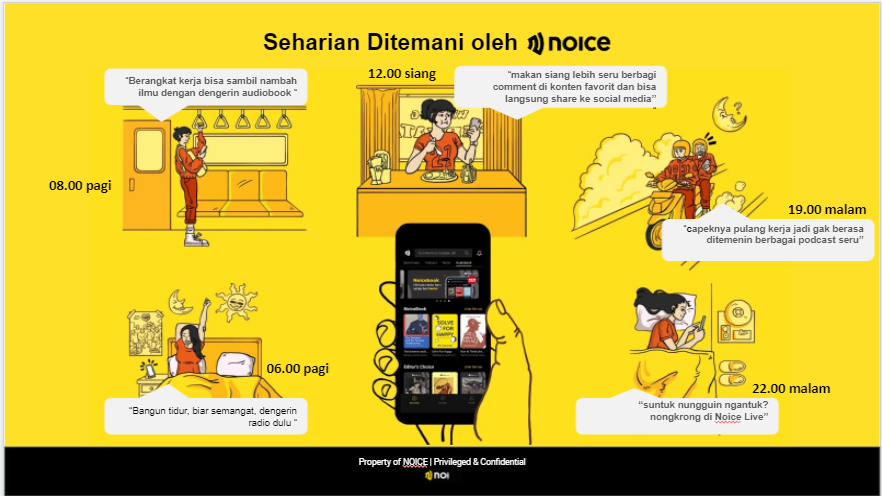
Hyperlocal content
Noice always emphasizes on the hyperlocal strategy they bring as differentiation to similar players, also as part of the company’s hypothesis to be the home of audio content in Indonesia. Rado explained that this hyperlocal content prioritizes aspects of Indonesian and regional languages with relevant topics in each region.
In further translating this strategy, Noice has developed a lot of tools to increase growth in terms of supply and demand. In increasing supply, the company will collaborate more with local communities to find quality creators to work through Noice.
From Noice’s observation, there are many local creators with quality content, but in visual form. For this reason, an educational process is needed through various webinars, therefore, creators can create quality audio content. In fact, the process of creating audio content is not arbitrary as it plays an element of the brain’s imagination with a series of words.
“Because making audio content is different from visual ones because you have to play a theater of mind, you have to know how to capture it in audio format. Therefore, you don’t just convert from visual content to audio, because the target audience is different,” Noice’s Chief Business Officer, Niken Sasmaya added.
In the process of creating audio content, she said, is much simpler than visual because it does not need to include supporting images. The thing is to arrange the flow of discussion and speaking style, therefore, it can capture the listener’s imagination, and the tapping experience will be even more different.
Niken continued, the Noice team provides full support with studio facilities, production and marketing teams specifically for creators who want to create original and exclusive content on Noice. “There are producers and programmers who will help us think of the concept we want to make in accordance to the listener’s interest, then we look for suitable talents. It’s vice versa with the process [if any talent comes to Noice]. Thus, we’ll brainstorm with talent, what topics he likes to discuss.”
With the support of the Mahaka Group, which is Noice’s parent company, finding local talent will be easier because of its extensive network in the radio industry throughout Indonesia. Niken said Mahaka’s support in boosting Noice’s penetration was also intense, both in content partnerships and in collaboration with radio broadcasters.
“There are many famous radio influencers in Mahaka, we want to collaborate in these two worlds. We’re working on a plan regarding this.”
Apart from discovering and improving talent capabilities, Noice also creates a platform for more local creators can distribute their work via RSS feeds. Thus, Noice’s content supply is not only original and exclusive works.
Niken said, if there is a potential content in the future from this feature, it is possible that they will be invited to collaborate more deeply with Noice to become an exclusive partner.
Currently, there are some local creators have been recruited by Noice in its respective regions in the form of Original and Exclusive Noice, including Lambemu (Surabaya), Capila (Sulawesi), Balik Bandoeng (Bandung), and Stories of Hometown (Yogyakarta).
The presence of these local creators is able to boost the spread of Noice users. Although the majority are still in Jakarta (18.05%), there are also contributions from listeners in Surabaya (16.45%), Depok (8.24%), Makassar (5.29%), and Bandung (5.28). %).
Noice Live
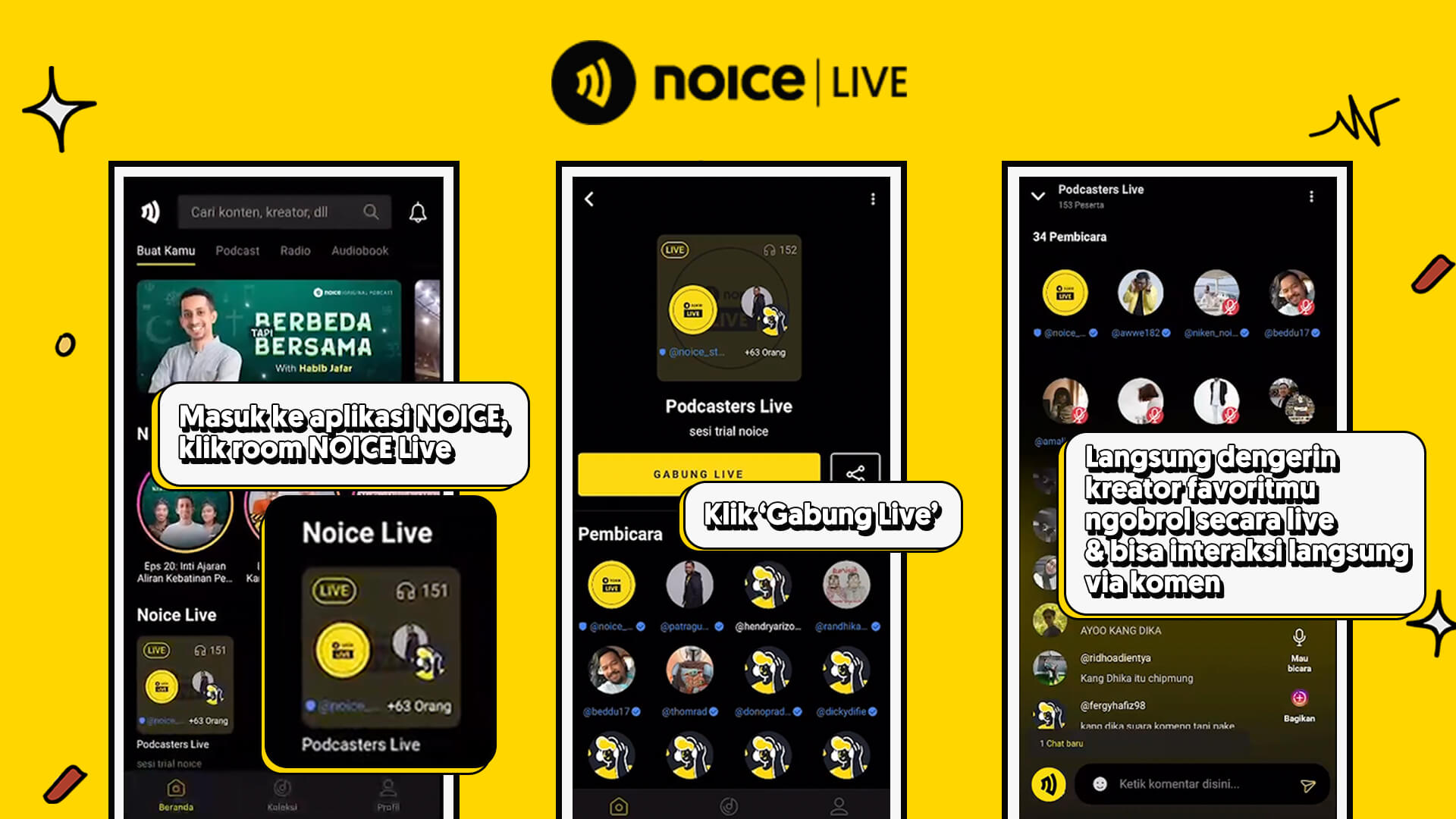
Meanwhile, to increase the demand side, Noice has developed a lot of features with objective to increase two-way interaction between creators and their listeners. The feature to represent that objective is Noice Live which the company just launched and will be a big feature in Noice.
Noice Live is actually not much different from Clubhouse because it allows real-time interaction between creators and listeners. The topics raised were varied, ranging from small talk, comedy, music, business, and current issues.
However, Rado said there are several differentiations that make Noice Live unique with Indonesian nuances. It includes providing live comment for listeners in the room. This feature is created because Indonesians like to be directly involved with their favorite creators.
Listeners who have registered can simply open the Noice application and click on the room to listen to the content. In addition, verified creators who want to create content in the Noice Live room can also invite listeners to become speakers/guests in the room.
“We want to create a new experience to increase engagement between creators and listeners in a two-way manner. From the existing collaborations with creators, the engagement is quite good, many of the live sessions last long because listeners are happy with the content. This is a new color for us, in the future, Noice Live will be able to be used in other formats.”
Noice Live is more selective for creators who want to create rooms, it only allows those who have been verified. Therefore, it’s not simply anyone can open a room. This is to maintain the quality of the content presented by Noice.
“Not everyone wants to be a speaker, some people want to stay behind the scenes. That’s why we made the room only for selective creators. However, there is a possibility for it to be open to more people, such as public figures or celebrities, therefore, the content can be of higher quality and more engagement occurs.”
Another feature to complements Noice’s ambition as a home for audio content is an audiobook named NoiceBook. It is said that currently 70 audiobook titles have been published, the plan is to reach 150 titles by the end of this year.
Aiming for a sustainable company
Rado said, Noice’s various efforts described above are to show its ambition to set a benchmark in the industry on how to create quality audio content, considering that the audio content industry is relatively new in Indonesia. “We wanted to participate in the industry with a benchmark set to inspire other podcasters looking to create audio content.”
Apart from that, the company has also made a series of monetization plans in the future to become a sustainable company. Niken explained that in the common audio content industry, there are many ways of monetization, for example adlibs that generate revenue sharing between companies and creators, as is what the radio industry is currently doing.
The company is to use the strategy this year. The monetization plan Noice’s has been doing is currently for original content produced in collaboration with creators appointed as talents. There is value given to them.
The company has also created virtual gifts on Noice Live for users to give to their favorite creators and it can also be cashed out. YouTube has implement this strategy through Super Chat.
“In the future we will start to generate monetization plan outside of exclusive and original content, there will be several monetization features to develop. We want to make it possible for creators to make Noice their livelihood,” concluded Niken.
–
Original article is in Indonesian, translated by Kristin Siagian

